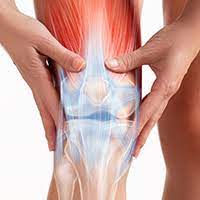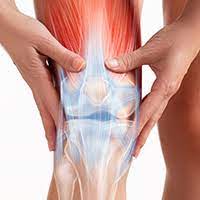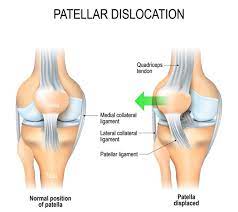7 Types of Knee Injuries

7 Types of Knee Injuries
Curious about knee injuries? Have you sustained a knee injury and want to know more? We've got the information for you!
1. Knee Sprain

Sprains are injuries to the ligaments that give the knee stability. We have the anterior cruciate ligament (ACL), posterior cruciate ligament (PCL), medial collateral ligament (MCL), and lateral collateral ligament (LCL). These stabilize and keep the knee aligned. There are 3 grades of knee sprains. Grade 1 is where the ligament is stretched and painful, but the fibers are not torn, and no instability is present. Grade 2 is where the fibers of the ligament are partially torn, and mild instability is present. And Grade 3 sprain is where the ligament fibers and completely torn and the knee is unstable.

2. Knee Strain
Strains usually occur because of hyperflexion or hyperextension of the knee where the tendons or muscles surrounding the knee are stretched. Strains can cause dysfunction of normal range of motion. The patellar tendon stretches from the lower kneecap to the front of the tibia at the front of the leg.
3. Knee Bursitis
Knee bursitis is when a fluid-filled sac in the knee is irritated, inflamed, or infected. These sacs are located around joints that
act as shock absorbers and minimize friction between tissues such as muscles and tendons. There are two main bursas in the knee, one above the patella and one below the knee joint near the front of the tibia.
4. Tears of the Meniscus
Meniscus tears occur when there is damage to the inside of the knee. The medial and lateral menisci act as shock absorbers and cushions for the femur. These menisci can be injured acutely or gradually become dysfunctional due to overuse and/or aging.
5. Knee Joint Dislocation

Knee dislocation can occur if the knee sustains high-impact, large forces which could be from sports, motor vehicle accidents, or just everyday activities. Knee dislocation is a rare injury but causes severe damage to all anatomical components of the knee. The patella can dislocate to the side of the knee which can be very painful, but not life-threatening and can be treated by popping it back into place, splinting, and physiotherapy.
6. Knee Fracture
Fractures occur from direct blows to the bones. A fractured patella or kneecap occurs when a person falls directly down onto the knee and the patella cracks due to the force. This injury from sudden compression to the knee can occur especially in people with osteoporosis. Tibial plateau fracture is the collapse of the top of the tibia bone in the knee. If there’s a break or crack in the top of the shin bone at the knee, on the cartilage surface, the joint there is then unable to absorb shock.
 7. Other Overuse Injuries
7. Other Overuse Injuries
PFPS (patellofemoral pain syndrome) or “runner’s knee” is a common knee injury where accumulation of repetitive damage to the knee structures causes weakness and degeneration of the cartilage under the kneecap. Congenital knee problems or improper mechanics of knee movement could cause this.
Osteochondritis dissecans is a joint disorder where the bone and cartilage beneath the joints loses its blood supply. This results in joint pain and stiffness and occurs most commonly in children. This not only affects knees but can also affect other joints such as elbows and ankles.
Osgood-Schlatter disease is a condition in children caused by growth spurts that cause knee pain and swelling below the kneecap.
Closing
Experiencing any type of knee pain or having sustained an injury? Talk to your physiotherapist to get to the root of the problem and they can set you up with a home program to manage and prevent further pain and injuries.
FAQ
“How do I know if I need an X-ray, CT scan, or MRI?”
-
A physiotherapist can perform special tests to check for instability of the ligaments and test for damage to the cartilage. This will be done by the physiotherapist bending or twisting the knee to see the extent of the injury. X-rays and CT scans are used to assess for bony injuries like fractures. MRIs are used to evaluate soft-tissue damage to ligaments and cartilage.
“How can I prevent knee injuries or manage them?”
-
Exercises! Some examples of good exercises are hamstring curls, quad sets, calf raises, shallow standing knee bends, and straight leg raises. And if you need help on where to start and how to do exercises, it’s a great idea to see a physiotherapist! Knee injuries can also be prevented by maintaining fitness and lower body strength, wearing proper shoes, avoiding slippery or uneven or loose gravel surfaces, and make sure your home is safe to avoid falls.
“What is my recovery time for my knee injury?”
-
That all depends on the type and severity of the injury. If the injury is significant enough and you need surgery, the recovery time will be longer. Strains or sprains could last for four to six weeks. Major traumatic injuries may take a year or more before they are fully healed. See your physiotherapist and they can help ensure you are doing your exercises correctly and attaining the best results.